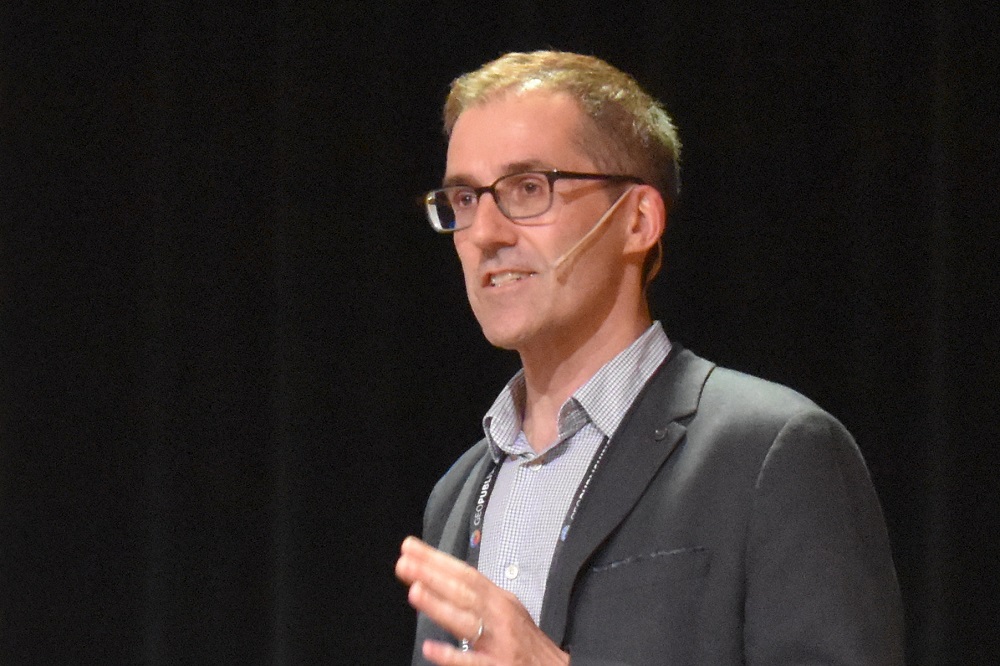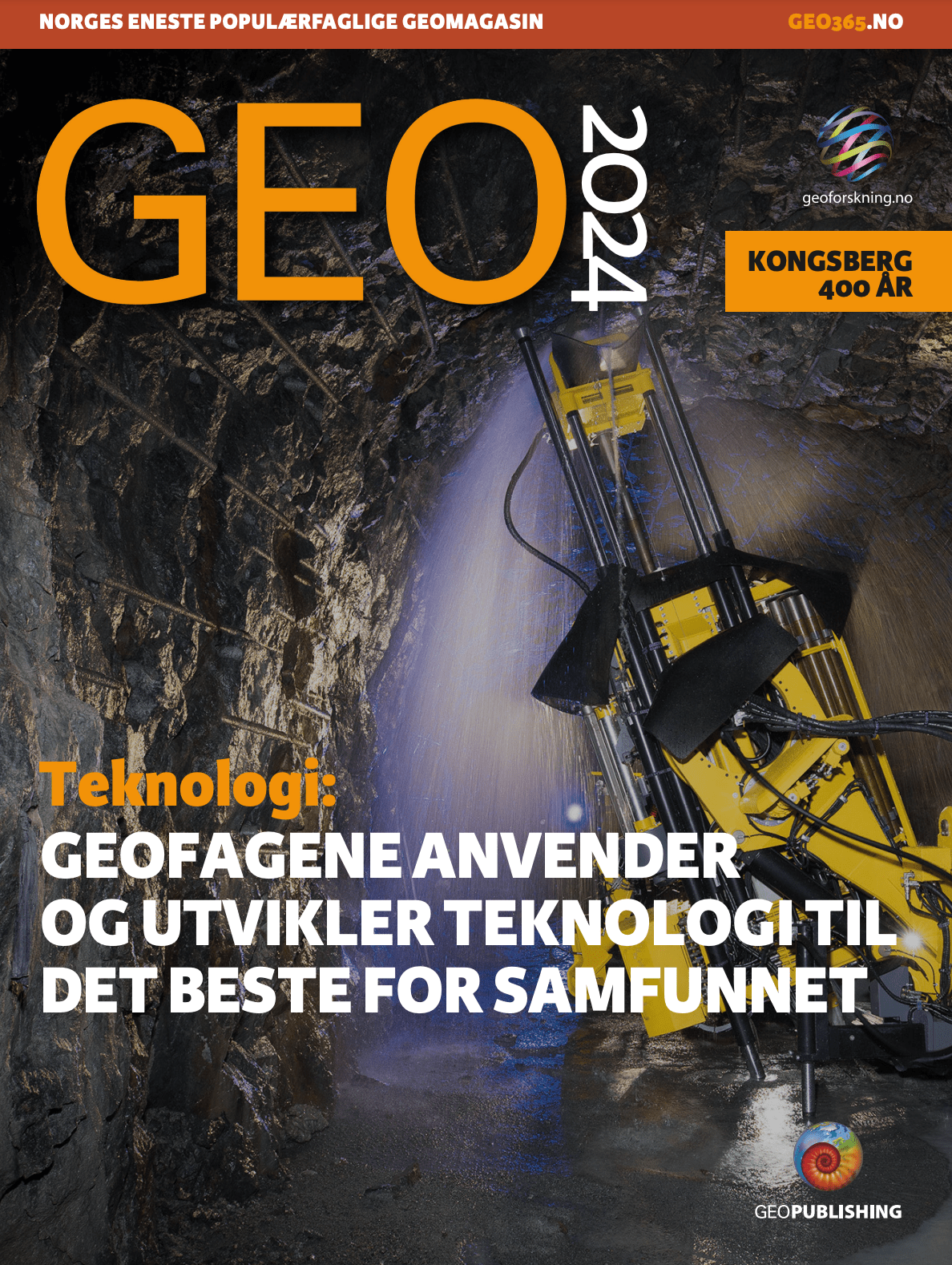Top view of a numerical simulation of the collector plume generated during the 2021 mining trials in the Pacific Ocean. The black arrow indicates the ocean bottom current. Illustration: Peacock et al., 2022
– How far will a sediment plume travel from a seabed mining site, and in what concentrations? This is the first order problem the industry needs to solve, argued MIT professor Thomas Peacock.
Peacock spoke at the Deep Sea Minerals 2022 conference in Bergen on October 26. The conference was organized by GeoPublishing.
One of the main environmental issues concerning deep-sea mining is how the mining activities on the seafloor may stir up sediments and produce sediment plumes (underwater “dust clouds”).
This is an issue that, according to Peacock, is relevant for all three types of deep-sea mineral deposits: seafloor massive sulphides (SMS), manganese crusts and polymetallic nodules.
The Massachusetts Institute of Technology professor and his team have spent the last few years conducting field research and doing computational modelling to develop a better understanding on how disturbances on the seafloor generate plumes and how these plumes evolve in time and space.
Peacock said that plume generation is highly dependent on the type of mining operation in question; where the locality is (such as abyssal plains or seamounts) and what extractive technology is being used (picking, vacuuming, drilling, blasting etc.).

Drive-bys and selfies
Last year, a team of researchers from MIT and Scripps Institution of Oceanography conducted a study in the Pacific Ocean, more precisely in the Clarion-Clipperton Zone (CCZ) which is roughly located between Mexico and Hawaii.
The CCZ is considered to be the largest manganese nodule field in the world, and these nodules may supply a large portion of the future need for metals for renewables and batteries.
The researchers equipped a prototype of a nodule collector vehicle belonging to Global Sea Mineral Resources with instruments and then let the vehicle drive and perform manoeuvres (including plume drive-bys and taking selfies) across the seabed.
The collector stirred up the sediments, and the researchers monitored the sediment plume and measured its properties.
Majority of the plume settled locally
The results, recently published in Science Advances, were somewhat surprising. The vehicle created a dense plume behind it, as expected. However, only a small fraction of the sediments was detected above 2 meters above the seafloor, while the majority of the plume – 92–98 per cent – stayed below 2 meters.
The low-lying plume was described as a dense cloud that behaved almost as a separate fluid. This is known as a turbidity current, which is a type of gravity current.
The field trials showed that the plume kept spreading laterally for some tens of minutes until it “ran out of steam” and settled on the seafloor.
These observations contrast the general belief that 1) the sediment plumes may rise higher into the water column, and 2) the plume may travel far (many kilometres).
Plumes are however, according to Peacock, highly complex in nature and advances in modelling efforts is required to fully understand how they behave in different regimes. The results from the field experiment may differ from similar tests done elsewhere under other conditions.
A factor of 30 error‘
– Our advances in physics-informed monitoring and modelling reveal that failing to properly consider the fundamental fluid mechanics processes that control plumes, leads to misconceptions in interpreting field data and substantial errors when predicting their scale and fate.
As an example, Peacock showed that the total area impacted by a plume (how far it travels and settles) is highly dependent on the grain size distribution of the sediments.
– A factor of 3 uncertainty in your particle size will give you a factor of 30 error in the size of your plume.
Peacock also claimed that the paradigm of using large-scale ocean models is far from useful in conducting studies related to small-scale mining operations on the seafloor.
– It is like using a sledgehammer to crack a nut and doesn’t provide the nearfield understanding that is needed.
Instead, the MIT professor made the case that the future deep-sea miners should spend their energy and effort on understanding the fluid dynamics to get a more precise overview of the sediment budget surrounding the mining operation.
– But in every case, even state-of-the-art computational models of plumes have limitations, and monitoring is indispensable, Thomas Peacock concluded.
Solvable by technology
Several presenters at the conference mentioned plumes in terms of environmental impact, but also as a challenge solvable by technology.
Oliver Gunasekara, CEO and Co-Founder of Impossible Metals, revealed the company’s vision of a fleet of autonomous robotic vehicles (AUVs) that can mine nodules in a better way than machines that exist or are on the drawing board today.
The Impossible Metals AUVs are designed to float above the seafloor to minimize plume generation and disturbance of benthic organisms. Additionally, the AUVs will use arms to pick up individual nodules, as opposed to vacuuming the entire sea floor. That should also minimize plumes.

Pablo Sobron, Founder and Sensing Wizard at Impossible Sensing, presented another AUV concept (STINGRAY) that will be used for exploration and monitoring.
Sobron claimed that the STINGRAY can analyse polymetallic nodules, map buried sulphide deposits and determine the cobalt distribution in crusts remotely, all without having to dredge or cut. The result is zero plume generation. In addition, the AUVs may be used for monitoring plumes during mining operations.
Walter Sogness, CEO at the Norwegian exploration start-up company Loke, said they are developing a concept of a Plume Free Nodule Collector using either mechanical fingers or rakes to lift the nodules off the seafloor.
If successful, this concept will cause minimum disturbance of the seabed and the only sediment removal will be what is stuck to the nodules.
Sogness expects that this will reduce plume generations by up to 95 per cent.



